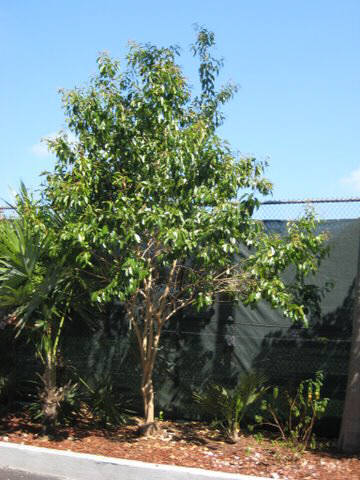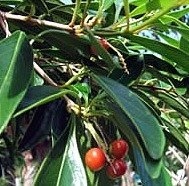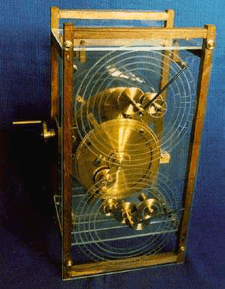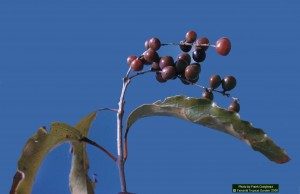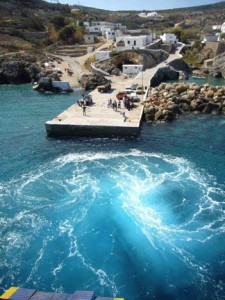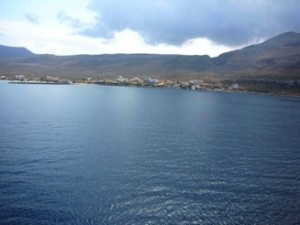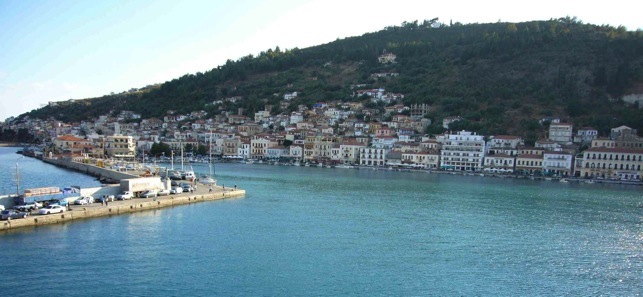Citharexylum fruticosum: Edible Guitar
The Fiddlewood tree is not high on the list of edibles. As some authors state, only kids eat the fruit, lots of seed, sparse on pulp. But it has some personal history to me — remotely — and is also a medicinal tree.
First edibility: The fruit resembles red wild cherries when unripe, and perhaps that is where the first disappointment arises. Like the Indian Strawberry the association implies something it is not. (The same thing happens with the Suriname Cherry.) And the taste of the Fiddlewood fruit when ripe is not great. It depends on how hungry you are though opinions vary. Many like it. The fruit has two stones, is sweet and is available all year in its native range, which is where it is warm
The botanical name is Citharexylum fruticosum (sith-ar-RECKS-sil-lum froo-tick-OH-sum) a name that can take us on quite a linguistic journey because “cithera” means guitar. So why is it “fiddlewood?” Almost directly translated the botanical name means “lyre wood shrubby” Put in better terms it could mean “guitar wood tree” or more directly “shubby kythera.” (KITH-ah-rah) Kythera (a lyre is kythara, kith-THA-rah) is also the Greek word from which we get “guitar” … kith-THA-rah… get-TAR…see it? Hear it? The Fiddlewood tree is also called the Guitar Tree. To explain it all we have to go to Greece.
One can navigate by sight from the western end of Crete northward to the southern tip of the Greece mainland in The Mani, where the Spartans lived. Cretans and Maniotes call themselves First Brothers and have much in common in dress, cooking and customs. From Crete’s Gramvousa Peninsula you can see Little Kythera, some 20 miles away. Little Kythera (Antikythera) sits on a fault line and a few decades ago part of the small island rose 20 feet, a change that is still quite visible today. That is also where a brass sextant of sorts (the Antikythera Mechanism, below right) was found in 1901 proving celestial calculations with an instrument was possible two thousand years ago. Little Kythera as of this writing has 44 permanent residents.
Incidentally, the ferry in season, see photos below, lands twice a week at Little Kythera doing the nautical equivalent of a “touch and go.” The football-field-long ferry backs up to the dock, lowering the gang way as it backs up. The very moment the gang way is over the dock it drops. All things going off or on do so in about a minute. The gang way lifts a few inches and the ferry leaves immediately, cranking the gang way up the rest of the way while over open water. The docking, exchange, and departure takes less than five minutes.
From Little Kythera you can see Crete to the south and Kythera to the north, taller but farther away. And Kythera is indeed shaped like a lute or a guitar. A large island, it has some 3,000 permanent residents plus an airport. Interestingly, some 100,000 Greeks in Australia claim ancestry to Kythera and try to return at least once a year, in the Greek summer, which is conveniently the Australian winter. Kythera is the birth place, so to speak, of Aphrodite. The island was first inhabited by the Minoans and then the Phoenicians, both of whom wanted the Murex, a tiny shell fish whose minute anal gland was the only source of royal purple dye in ancient times. How they discovered that is anyone guess. From Kythera one can see Little Kythera to the south and to the north the southern tip of the main land called Peloponneus, specifically “The Mani” from where we get the word “maniacs” in English because of how tenaciously they fought. It is one area of Greece never occupied by the Turks or the Germans.
If you take the day-long ferry from Crete it lands at Little Kythera, Kythera, then on the mainland at the little city of Gythio, whose sole industry in the past was collecting the royal purple as well… there’s about 10 square feet of ruins there right beside the road. Gythio was also the home port of the Spartans and the area where this writer’s family comes from.
Now which came first, the instrument then the naming of the island or the island and the naming of the instrument is a debate. But, kythera …kythera…came to mean lyre and from kythara we got guitar and from that we got the fiddlewood tree. How? When Linnaeus was naming plants the English words “violin” or “fiddle” were not common in his time plus he preferred classical names. He knew the wood was used to make musical instruments so he named it “guitar wood shrub” Citharexylum fruticosum. That got stretched into Guitar Tree and then Fiddlewood Tree. Now you know.
The most common name for the tree in the Caribbean islands is “old woman’s blisters” read it’s used for a lot of ailments. Boiled twigs and decoctions are used if you’re chilled. When mixed with Strongback and Spoonbush it is used for sores. Boiled with mahogany, lignum vitae, Doctor Club roots, Snowberry and papaya latex, it was used to aid indigestion… or perhaps create it…. Also beware… insects of all sorts love the tree so you will encounter them, in numbers. The fruit plup is edible but not prized. Do not eat the seeds.
Green Deane’s “Itemized” Plant Profile: Fiddlewood Tree
IDENTIFICTION: Citharexylum fruticosum: Shrub or tree to 30 feet, short trunk or several trunks, erect branches, compact. Leaves opposite, oblong to oval, with pointed or notched tip, to six inches long, glossy, yellow-green leathery, with orange stalks. Flowers white, tubular, five lobed, 1/8 inch wide, fragrant, in hairy clusters to six inches long. Fruit half-inch wide, brown or orange red when unripe, purple black when ripe. Sweet, two seeds.
TIME OF YEAR: All year
ENVIRONMENT: Coastal pine lands and hammocks
METHOD OF PREPARATION: Ripe fruit edible raw, but not great. Do not eat the seeds.
Right, backing up to the dock at Little Kythera, Greece. The ferry comes by twice a week in season, south to Crete one day, north to the mainland the next. Below left is Kythera showing the “neck” of the guitar. The large picture is the small city of Gythio, home port of the Spartans and of this writer’s ancestors in the villages of Karea to the southwest and Konakia to the northwest. A small island just a few hundred feet off to the left of Gythio was where Paris and Helen spent the night consummating their love, starting the Trojan War, or so the romantic story goes.

